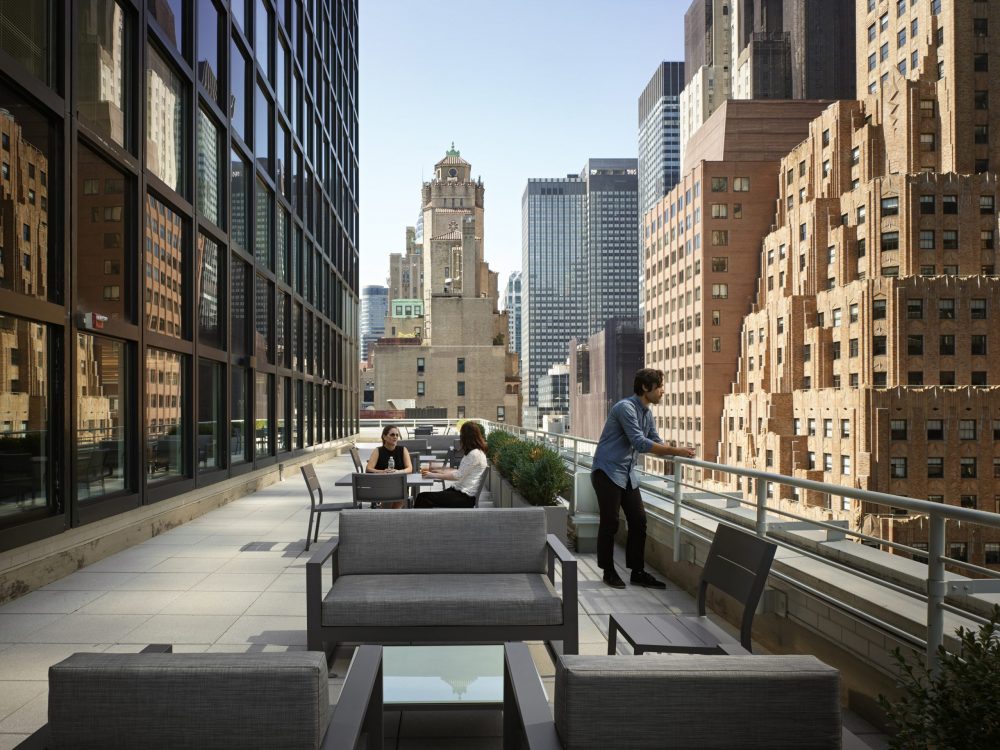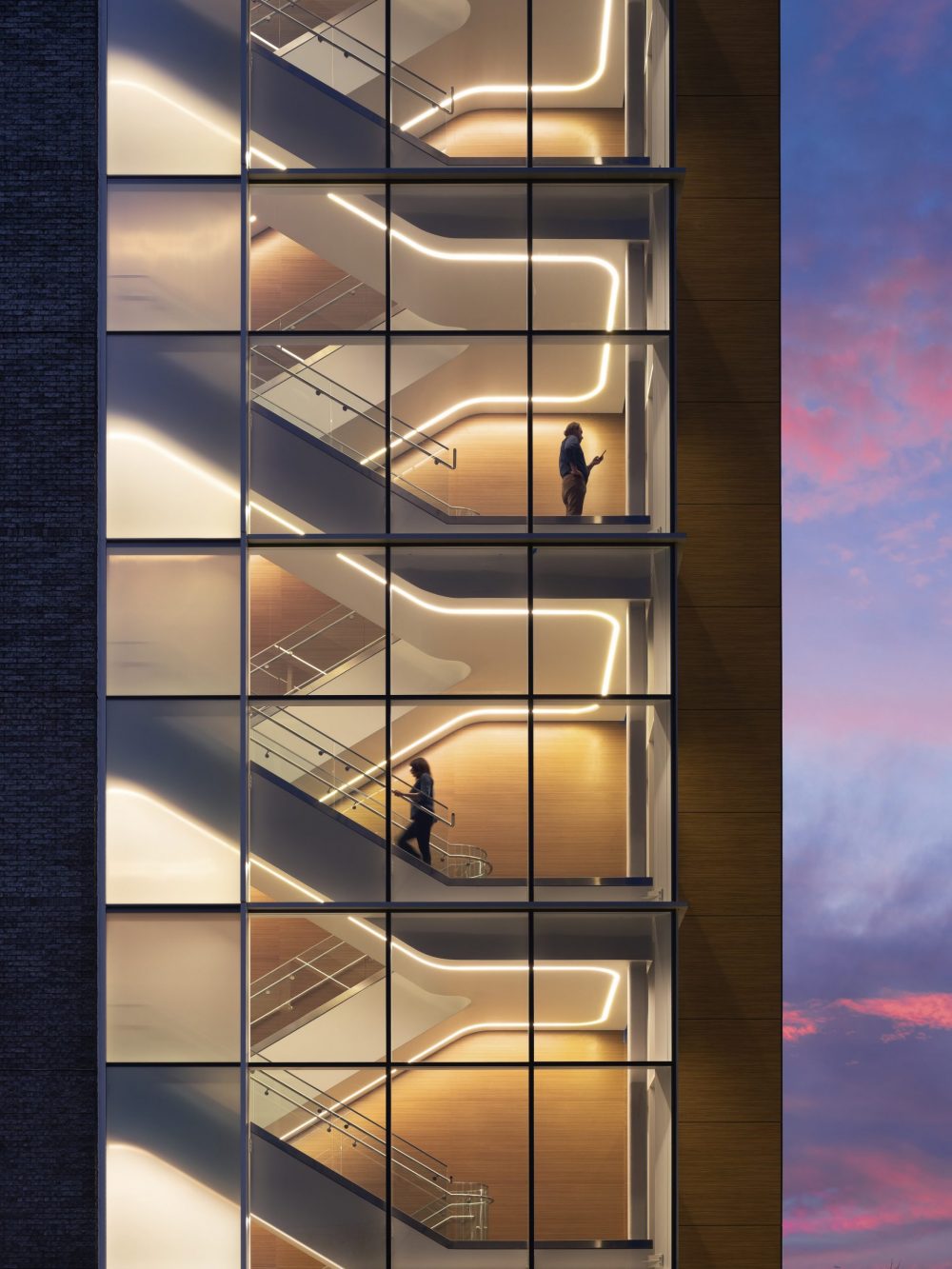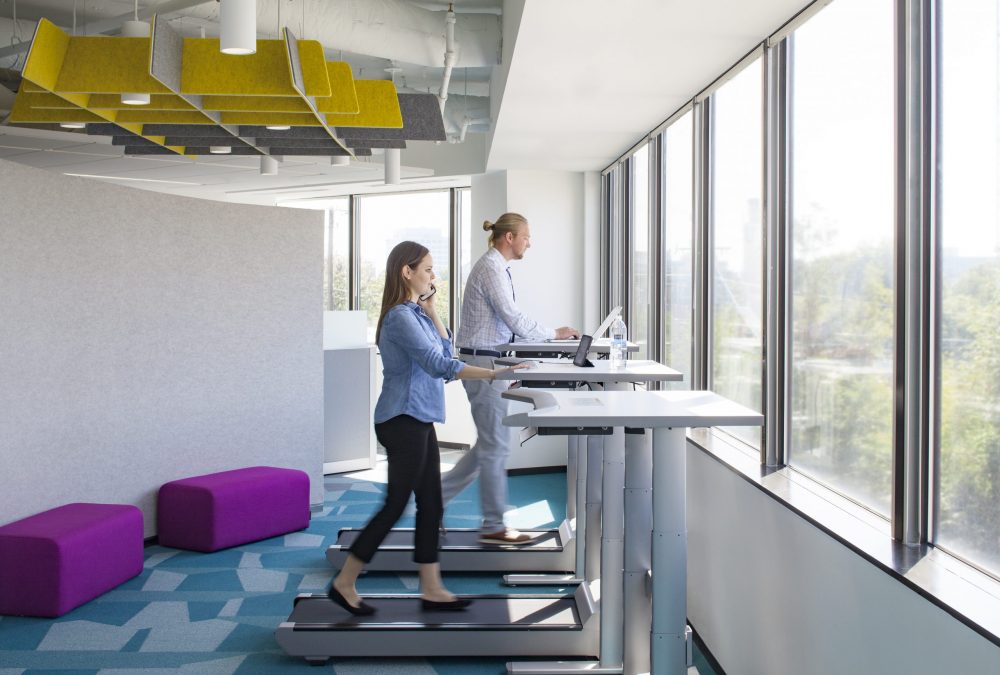CallisonRTKL’s Jim Henry and Jodi Williams share a few areas of self-care that will edge into the workplace more effectively this year.

“Limbo,” “fallow” and “exhausting” are, according to Washington Post, just a few of the words people used to describe the past year. 2021 promises a fresh start.
For years, medical practitioners have told us to take better care of ourselves: eat healthier, exercise more, sleep eight hours, take mental health breaks. And the workplace design community complied, creating spaces that were intended to provide employees with the choice and control to take better care of themselves during the workday. Yet, somehow, many of us still managed to chain ourselves to our desks and devices and failed to truly “take care.”
Last year, however, the pandemic pushed us outside our normal boundaries – both literally and figuratively – challenging our physical and mental health. We took note, paid attention, and then actively began to engage in self-care. As we consider the future of workplace, an anticipated return to the office and the work community that we engage with, can we maintain this commitment?
The linkage between mental and physical health is well-documented, and it is necessary to address both to increase wellbeing. Here are a few areas of self-care that we think will edge into the workplace more effectively now that it has been “normalized” in a very not-normal year:
Eating and Greeting
It feels like old news, but diet is critical to health, wellness and wellbeing. A better diet is one of the advantages many are finding while working remotely: easier access to healthy foods and a glass of water, plus no tempting vending machines or free snack platters hanging around pantries and break areas.
While buffet lines and bowlfuls of grabable/shareable snacks (healthy, organic and preferably local) are unlikely to see a rapid comeback in the post-pandemic workplace, we anticipate that employees will strongly desire the ability to eat better – and eat together. This will result in a rethinking of pantries and break rooms: more food prep space, better systems for heating or reheating food, and an emphasis on easily maintained space. Food delivery services will continue their prevalence, and landlords and occupiers will need to rethink how to handle an influx of food (and waste/recyclables).
Eating at the desk – strongly discouraged for many reasons, from cleanliness and olfactory reasons to productivity – will become less socially accepted and the strong desire to be with others will drive the need for more, and more varied, eating and greeting locations.
Telehealth
Telehealth was an emergent field that surged during COVID-19. According to a survey by McKinsey, more than 80 new services are now available due to telemedicine, and the interest in telehealth has increased 65 percent since 2019. Fundamentally, better access to care leads to better health outcomes, healthier communities, and a healthier workforce. It also enables easier access to physical and mental health during the workday – assuming offices provide private areas to take a call with a therapist or discuss symptoms with a doctor, nurse or PA.
With telehealth, the importance of phone/Zoom rooms with visual and acoustical privacy become more critical. We’ll see a rethinking of mother’s rooms and meditation/flexible areas as well. Not only will these new developments improve employee health and productivity, but they will also provide a more inclusive workplace that caters to a diverse group of people with varying needs and abilities.

Movement and Fitness Tech
For years, designers emphasized creating workplaces that encouraged movement: well-designed stairs, centralized resources and thoughtful circulation. The benefits are well-documented and a growing awareness by people to take better care of themselves has only accelerated and emphasized the need for office design to continue to evolve.
The abundance of fitness tracking systems and short workout programs (the seven-minute workout, desk yoga, etc.) and the flexibility to take a quick self-care break during the workday enabled by remote work has driven an increase in exercise. Returning to the workplace, this flexibility needs to be accommodated to attract and retain talent. We anticipate a more robust response to long-term employee requests for locker rooms, shower rooms, and storage areas for fitness equipment. Perhaps we will even see some larger landlords and occupiers delve into laundry service beyond dry-cleaning drop off!
Companies like Peloton, Tonal, Mirror, and Fight Camp are all personalized fitness programs tied to online environments and communities. Peloton, the pioneer, was well positioned heading into the pandemic. The platform is personalized, allows choice to align with personal preferences, leverages the latest technology, and seeks to build community. As a micro system, it is a wellness platform that employers could emulate to build a healthy and more engaged workforce.
Prior to the pandemic, forward-thinking landlords were installing Peloton bikes in fitness centers. We expect the office of the future to include more of these types of resources, not only in shared amenity spaces, but also in the workplace itself.
Daylight and Fresh Air
For the last few decades, the design industry has pushed for better access to daylight, views, and natural ventilation. These seemingly simple strategies create better health outcomes and better engagement/higher productivity in employees. Working remotely has allowed employees to have more control over where they work (a desk, the kitchen table, the couch, the patio, a nearby park) and the amount of time they are outdoors. This flexibility is here to stay and will be needed to attract people back to the workplace.
Landlords and occupiers have long known the desirability of roof decks and patios. We believe employees will be looking for more and better outdoor spaces – and will actually use them – upon returning to the office. It is incumbent on design teams to create spaces to take into account ergonomics, weather conditions, security, flexibility and connectivity.

Rest and Reset
Access to healthcare, diet, exercise and improved environmental conditions are all determinants of our health. So too is sleep, which has an enormous impact on our physical health. The organization SleepFoundation.org found that poor sleep habits increased during the pandemic. Work and family stress, depression and isolation, anxiety and worry, increased screen time and life disruptions have created higher levels of fatigue. They can also affect the immune response as well as mental health and emotional wellness.
To combat anxiety and depression, new and revitalized technologies have become commonplace. Mindfulness apps like Calm, Ten Percent Happier, Headspace are strategies that lower anxiety and aid in improved mental health. Call it a mental reset.
Nap rooms, meditation spaces, and casual work areas – already trends in many workplaces – will continue to thrive in order to enable a breathing break, a quick listen to a guided meditation, or maybe even a nice space to scream. Nap lounges and sleep pods are popular ideas and work well in locations like airports; however, we expect that employees will be resistant to sharing space in this way without robust cleaning protocols in the near- and mid-term.
Wellbeing starts with the individual; however, workplace wellness programs and designs that enable and promote self-care will help create a healthier, happier, and more engaged workforce. Whether in the office or working remotely, self-care—a comfortable seat, a brisk walk, deep breathing, sunshine—is important! Our employees are worth the investment.

